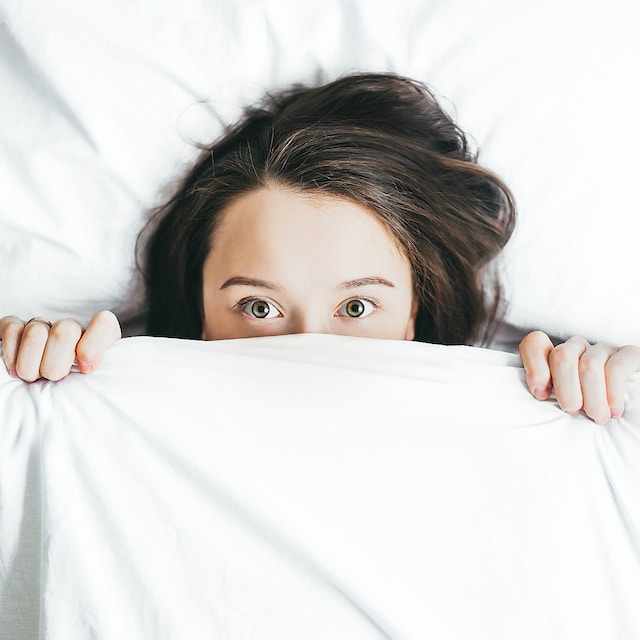Parisian bed bugs might choose your mattress as a permanent BnB
Published 10:53 am Friday, October 13, 2023

- Bed bugs? (Alexandra Gorn/Unsplash)
Pest expert warns ‘a very real risk’ Paris bed bugs will spread fast across Mississippi
A growing bed bug crisis in Paris made international headlines recently, leading to worries about these pests infesting cities around the world. And that concern is validated by licensed pest control professional Zachary Smith of The Pest Dude warns that it’s highly likely that bed bugs could spread fast across the state.
He notes that bed bugs in Mississippi are nothing new. They are already found in every state, but Smith worries that they can spread rapidly across each continental state.
Trending
These tiny, flat parasites feed on human blood during nighttime slumbers. While they don’t transmit diseases, bed bugs can lead to itchy bites, disrupted sleep, and considerable discomfort.
Bed bugs typically inhabit areas where people sleep, including apartments, hotels, shelters and dormitories. They often conceal themselves in mattress seams, box springs, behind bed structures, and within furniture gaps.
However, bed bugs can be anywhere their host lives, including the cars and planes people travel in.
Smith emphasizes their remarkable resilience, noting that bed bugs can endure extended periods between feedings, ranging from several weeks to months.
Smith advises to check for bed bugs in the following areas:
- Mattresses: Examine folds, seams and buttons. Check between the mattress and box spring and where the headboard meets the bed frame. Look for tiny blood stains on linens.
- Box springs: Inspect inside and around them, including the batting, slats and frame.
- Headboards: Check cracks, crevices and attachment points to bed frames or walls.
- Nightstands and Electronics: Review areas around and inside nightstands, including devices like clocks, phones, TVs and computers.
- Textiles: Inspect quilts, blankets, bedspreads and pillows near the bed.
- Walls: Examine areas near the bed, behind faceplates, wood paneling, trim and baseboards. Check between carpeting and baseboards and under carpet edges.
- Furniture: Look in and around upholstered items, drapery and joints of furniture like sofas and chairs.
- Windows and Doors: Investigate gaps in molding, cracks in frames and spaces beneath corner protectors.
- Closets and Clutter: Examine clothing and cluttered areas such as piles of magazines, books or papers.
To manage an active bed bug infestation and prevent its spread, Smith provides the following tips:
- Mattress Encasements: Use them to trap bed bugs inside, starving them by cutting off their food source (you) and preventing their migration. These encasements also block new infestations.
- Bed Bug Traps: Devices that capture and kill bed bugs. Some, like glue traps, use adhesive boards to ensnare them.
- Vacuuming: Vacuum areas with signs of infestation, including mattresses, furniture, carpets and linens. Afterward, empty the vacuum into hot, soapy water to eliminate the bugs.
- Washing Bedding: After vacuuming, seal bedding in a plastic bag. Wash on the highest setting and dry on “high” for 30 minutes. If unwashable, just dry on “high”.
Trending
And finally, to kill the bed bugs, below are some options according to The Pest Dude.
Non-Chemical Bed Bug Treatments:
- Temperature: Use heat by washing affected items in hot water for 30 minutes and drying on high heat for another 30 minutes. Alternatively, freeze items for four days.
- Steam: Use a steamer on bug-infested areas like mattresses and couches.
- Desiccants: Substances like silica aerogel and diatomaceous earth destroy the bugs’ protective coating, causing dehydration. They’re effective with a high kill rate and resistance is unlikely.
- Botanical Sprays: Natural sprays with ingredients like clove oil can effectively kill bed bugs.
Chemical Methods:
- Insecticides: Pyrethrins and pyrethroids are common, with low toxicity to humans and pets. However, some bugs are resistant. Alternatives include pyrroles and neonicotinoids.
- Residual Treatments: These provide long-lasting protection, targeting both adult bugs and eggs post initial treatments.
“In this rapidly evolving situation, awareness and timely action are our best defenses,” states said Smith. “While bedbugs have always been a concern, their resilience and adaptability make it crucial for everyone to be informed and proactive.”





